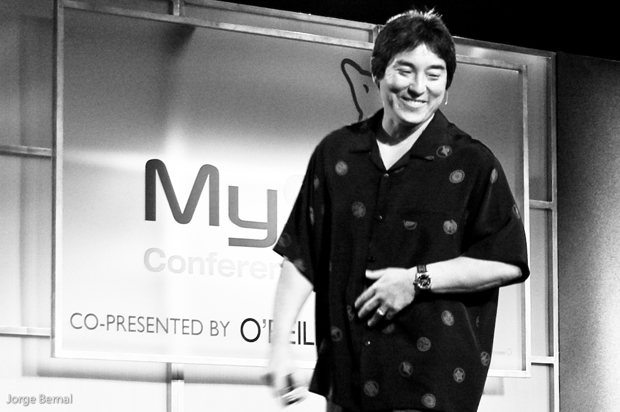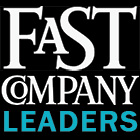
Over the past month, I attended three conferences. Each one brought together some of the greatest minds in B2B sales and marketing. Sadly, some of their presentations distracted us from their important messages. A chronic case of PPD (Pathetic Presentation Disorder) surreptitiously sabotaged their agenda.
PPD symptoms abound at technical and B2B conferences. According to Jerry Weisman, presentations coach and author of Presentations in Action, "The way that most business people rehearse their presentations is by clicking through their PowerPoint slides and saying something like, "'OK, with this slide I'm going to say a bit about our sales revenues...and with this one, I'll talk about our path to profitability...and then I'll show a picture of our lab and talk a little about R&D."
Jerry, I feel your pain when I am sitting in the audience! I was agitated enough to ask my friend Guy Kawasaki for advice. Guy's keynote at the Allegiance Summit enchanted everyone. Guy is the global expert on building customer evangelists. He is equally known for his uplifting presentations and just launched his ninth book, Enchantment.
[youtube cA2G44xqHWU]Lisa interviews Guy Kawasaki on the keys to enchanting presentations - 4 1/2 minutes
Here are four time-tested tips--some borrowed from Guy and Jerry-- to help you recover from PPD:
1. Follow the 10/20/30 rule: Ten slides maximum, 20 minutes of content, and 30 point font. Design your presentation, knowing that people don't care how many salient points you convey per slide. They want to engage with YOU. The slides serve as supporting documents. Keep that in mind when you are tempted to show your curve-jumping, paradigm-shifting model or process. (Consultants, are you listening?) While watching ING Direct's Arkadi Kuhlmann's presentation from the front row of the Allegiance Engage Summit, I smiled. (Who knew a banker could engage hundreds of technology and marketing fanatics?) Most slides contained just a few words or a photograph. Returning Americans back to savings--ING Direct's mantra--never felt so exciting.
2. Tell a story. Why did you launch your company? What inspired or angered you or motivated you to leave your comfort zone? Share a customer situation that you helped improve--or better yet, share a mistake you once made and how it transformed you. Need examples? Check out Chip Conley's TED talk here, and how Vivian found joy as a housekeeper.
3. Lead the audience to action. Your job is to share a dream and inspire others. Summary pages are NOT calls to action. Incite your listeners to do something differently or to think in a new way. When I keynoted with Marshall Goldsmith in San Diego last year, he did this flawlessly. He invited every person to select an accountability partner and to work on one limiting behavior.
4. Practice and enjoy talking to yourself. Weissman practices his presentation aloud several times while driving to his speaking venue. He admits that "the advent of Bluetooth has made speaking out loud to myself in the car appear less strange to other drivers on the road."
In a world filled with competing media platforms and over-stimulated professionals, it's time for everyone to take elegant, simple presentation design seriously. In my next post, I will provide my favorite resources to help you avert another PPD attack.
 Follow @FastCoLeaders for all of our leadership news, expert bloggers, and book excerpts.
Follow @FastCoLeaders for all of our leadership news, expert bloggers, and book excerpts.
Lisa Nirell is the Chief Energy Officer of EnergizeGrowth®. She helps companies grow customer mind share and market share. Since 1983, Lisa has worked with Trend Micro, Zappos, BMC Software, Microsoft, IBM, and hundreds of entrepreneurs in nine countries. Lisa is also an award-winning expert speaker, business columnist and the author of "EnergizeGrowth® NOW: The Marketing Guide to a Wealthy Company." To download your five complimentary educational bonuses and sample chapter, visit www.energizegrowth.com and register for EnergizeNews.
Copyright 2011, Lisa Nirell. All rights reserved.
[Image: Flickr user koke]